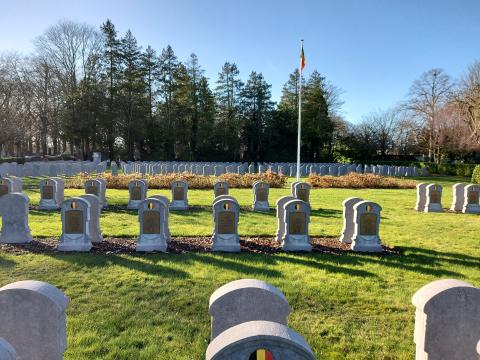History
The Bruges municipal graveyard, which encompasses the military cemetery, is one of the oldest in Belgium: Bruges inhabitants are already buried here in 1787. Its current size and shape are obtained through the purchase of various plots.
The first military casualties are buried as early as 1914, but most servicemen are given a last resting place here at the end of the conflict. Bruges, with its civilian hospital and many field hospitals, is painfully confronted with the violence of war. Interments are organized daily throughout 1919. Spanish flu also claims numerous victims.
In 1924 many military cemeteries are reorganized: some dead are reburied in their former places of residence, while others are transferred from small cemeteries in the vicinity. This is also the case in Bruges. The cemetery is expanded during the Second World War; most victims then fall in 1940. Today the site counts 610 Belgian casualties: 523 from the Great War, 86 from the Second World War and one from the war in Korea. Some civilians and members of the resistance have also been laid to rest here.
Casualties
523 Belgians First World War (15 unidentified) – 86 Belgians Second World War – 1 British Second World War – 1 Belgian Korean War
Description
The military cemetery is located in the north-eastern corner of the Bruges graveyard and is trapezoidal in shape. An open area divides the cemetery into two almost symmetrical blocks.
A flagpole flies the Belgian tricolour in the middle of the plot. Some rows present gaps: these casualties have been buried elsewhere and their tombstones have been removed.

